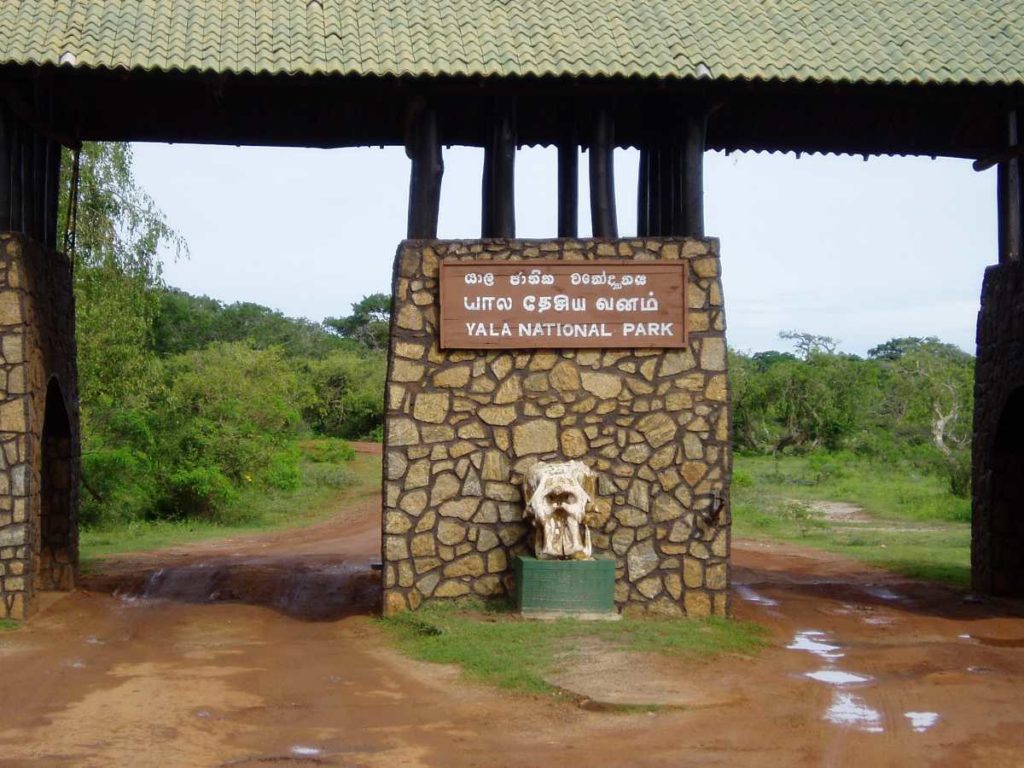
Importance of Yala National Park
The Yala area is mostly composed of metamorphic rock belonging to the Precambrian era and classified into two series, Vijayan series and Highland series. Reddish brown soil and low humic grey soil are prominent among six soil types. Yala is situated in the lowest peneplain of Sri Lanka, which extends from Trincomalee to Hambantota. Topographically the area is a flat and mildly undulating plain that runs to the coast with elevation is 30 metres (98 ft) close to the coast while rising in the interior to 100–125 metres (328–410 ft). The national park is situated in the dry semi-arid climatic region and rain is received mainly during the northeast monsoon. The mean annual rainfall ranges between 500–775 millimetres (19.7–30.5 in) while the mean temperature ranges between 26.4 °C (79.5 °F) in January to 30 °C (86 °F) in April. It is windier in Yala, during the southwest monsoon compared to the wind during the northeast monsoon with wind speeds from 23 kilometres per hour (14 mph) to 15 kilometres per hour (9.3 mph).
Water is abundant after the northeast monsoon, but during the dry season surface water becomes an important factor. The bodies of surface water appear in the forms of streams, tanks, waterholes, rock pools, and lagoons. Waterholes occur in low lying places while rock pools of varying size are capable of containing water year-round, and are hence an important source of water for elephants. For many water birds and water buffaloes natural waterholes are ideal habitats. Such reservoirs are largely concentrated to the Block I followed by Block II. Several tanks are there including, Maha Seelawa, Buthawa, Uraniya, and Pilinnawa tanks.Many rivers and streams flow in a southeasterly direction, originating in the highlands of adjacent Uva and central hills. Kumbukkan Oya in the east and Menik River and its tributaries in the west flow across the park, and provide an important water source in the dry season to wild animals of the park. Normally the streams of the park are dry during the drought season. These rivers and streams exhibit a degree of runoff fluctuations between wet and dry seasons. Kumbukkan Oya discharges seven times as much water in the rainy season than in the dry season. A number of lagoons are situated along the coast line of the park.There are several routes to get to Yala from Colombo, while the route via Ratnapura and Tissamaharama is the shortest with 270 kilometres (170 mi).
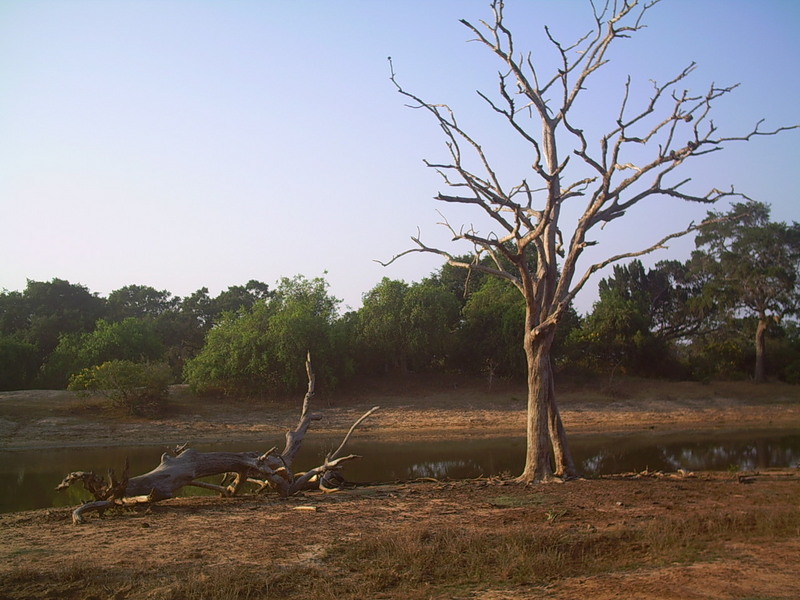
History of Yala National Park
The Yala area is mostly composed of metamorphic rock belonging to the Precambrian era and classified into two series, Vijayan series and Highland series. Reddish brown soil and low humic grey soil are prominent among six soil types. Yala is situated in the lowest peneplain of Sri Lanka, which extends from Trincomalee to Hambantota. Topographically the area is a flat and mildly undulating plain that runs to the coast with elevation is 30 metres (98 ft) close to the coast while rising in the interior to 100–125 metres (328–410 ft). The national park is situated in the dry semi-arid climatic region and rain is received mainly during the northeast monsoon. The mean annual rainfall ranges between 500–775 millimetres (19.7–30.5 in) while the mean temperature ranges between 26.4 °C (79.5 °F) in January to 30 °C (86 °F) in April. It is windier in Yala, during the southwest monsoon compared to the wind during the northeast monsoon with wind speeds from 23 kilometres per hour (14 mph) to 15 kilometres per hour (9.3 mph).
Water is abundant after the northeast monsoon, but during the dry season surface water becomes an important factor. The bodies of surface water appear in the forms of streams, tanks, waterholes, rock pools, and lagoons. Waterholes occur in low lying places while rock pools of varying size are capable of containing water year-round, and are hence an important source of water for elephants. For many water birds and water buffaloes natural waterholes are ideal habitats. Such reservoirs are largely concentrated to the Block I followed by Block II. Several tanks are there including, Maha Seelawa, Buthawa, Uraniya, and Pilinnawa tanks. Many rivers and streams flow in a southeasterly direction, originating in the highlands of adjacent Uva and central hills. Kumbukkan Oya in the east and Menik River and its tributaries in the west flow across the park, and provide an important water source in the dry season to wild animals of the park. Normally the streams of the park are dry during the drought season. These rivers and streams exhibit a degree of runoff fluctuations between wet and dry seasons. Kumbukkan Oya discharges seven times as much water in the rainy season than in the dry season. A number of lagoons are situated along the coast line of the park.There are several routes to get to Yala from Colombo, while the route via Ratnapura and Tissamaharama is the shortest with 270 kilometres (170 mi).
Map of Yala National Park
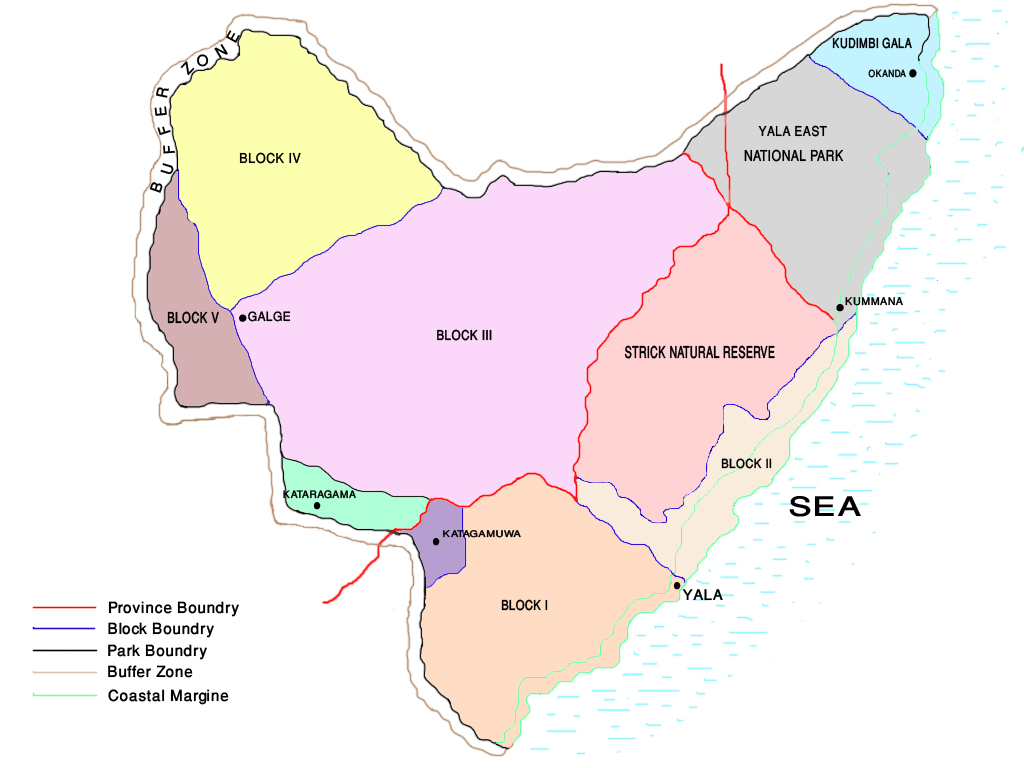
Physical Features of Yala National Park
The Yala area is mostly composed of metamorphic rock belonging to the Precambrian era and classified into two series, Vijayan series and Highland series. Reddish brown soil and low humic grey soil are prominent among six soil types. Yala is situated in the lowest peneplain of Sri Lanka, which extends from Trincomalee to Hambantota. Topographically the area is a flat and mildly undulating plain that runs to the coast with elevation is 30 metres (98 ft) close to the coast while rising in the interior to 100–125 metres (328–410 ft). The national park is situated in the dry semi-arid climatic region and rain is received mainly during the northeast monsoon. The mean annual rainfall ranges between 500–775 millimetres (19.7–30.5 in) while the mean temperature ranges between 26.4 °C (79.5 °F) in January to 30 °C (86 °F) in April. It is windier in Yala, during the southwest monsoon compared to the wind during the northeast monsoon with wind speeds from 23 kilometres per hour (14 mph) to 15 kilometres per hour (9.3 mph).
Water is abundant after the northeast monsoon, but during the dry season surface water becomes an important factor. The bodies of surface water appear in the forms of streams, tanks, waterholes, rock pools, and lagoons. Waterholes occur in low lying places while rock pools of varying size are capable of containing water year-round, and are hence an important source of water for elephants. For many water birds and water buffaloes natural waterholes are ideal habitats. Such reservoirs are largely concentrated to the Block I followed by Block II. Several tanks are there including, Maha Seelawa, Buthawa, Uraniya, and Pilinnawa tanks. Many rivers and streams flow in a southeasterly direction, originating in the highlands of adjacent Uva and central hills. Kumbukkan Oya in the east and Menik River and its tributaries in the west flow across the park, and provide an important water source in the dry season to wild animals of the park. Normally the streams of the park are dry during the drought season. These rivers and streams exhibit a degree of runoff fluctuations between wet and dry seasons. Kumbukkan Oya discharges seven times as much water in the rainy season than in the dry season. A number of lagoons are situated along the coast line of the park.There are several routes to get to Yala from Colombo, while the route via Ratnapura and Tissamaharama is the shortest with 270 kilometres (170 mi)
Flora Diversity
Yala National Park has a variety of ecosystems including moist monsoon forests, dry monsoon forests, semi deciduous forests, thorn forests, grasslands, marshes, marine wetlands, and sandy beaches. The area under forest cover mainly consists of Block I and rangelands of open parkland (Pelessa grasslands) including some extensive grasslands. The forest area is restricted to around the Menik River while rangelands are found towards the sea side. Other habitat types of the Block I are tanks and water holes, lagoons and mangroves and chena lands. The mangrove vegetation in the Buthuwa lagoon is largely Rhizophora mucronata while Avicennia spp. and Aegiceras spp. are less abundant. The vegetation of Block II is similar to those of Block I, and Yalawela, once a fertile paddy field, represents Pitiya grasslands. The mangroves of Block II occur around the estuary of Menik River, which extent to 100 hectares (0.39 sq mi). The common mangrove plants are Rhizophora mucronata, Sonneratia caseolaris, Avicennia spp., and Aegiceras corniculatum. The lagoons of Pilinnawa, Mahapothana, and Pahalapothana are also located in this block.The other common mangrove species are Sonneratia caseolaris, Acanthus ilicifolius, Excoecaria agallocha, and Lumnitzera racemosa. In the bare sand Crinum zeylanicum is found.
In the Blocks III, IV, and V, forests are more widespread. The canopy of the forest mainly contains Drypetes sepiaria and Manilkara hexandra plant species. The Pitiya grasslands are important for grazing animals. Cynodon barberi is the common grass in Pitiya grasslands while Zoysia matrella becomes dominant near the beach. Among 300 odd floral species are Manilkara hexandra, Drypetes sepiaria, Ceylon Satinwood, Terminalia arjuna, limonia, Berrya cordifolia, Randia dumetorum, Pleurostylia opposita, Gymnema sylvestre, Bell mimosa, Neem, Banyan, Toothbrush tree, Schleichera oleosa, Vitex pinnata, Indian blackberry, Gmelina asiatica, Carissa spinarum, Euphorbia antiquorum, and Acacia eburnea.In the seasonally flooded areas of Block II, a wild species of rice is found. Glenniea unijuga is an endemic plant species found around the wetlands of the park. Munronia pumila, Salacia reticulata, and Asparagus racemosus are some medicinal plants.
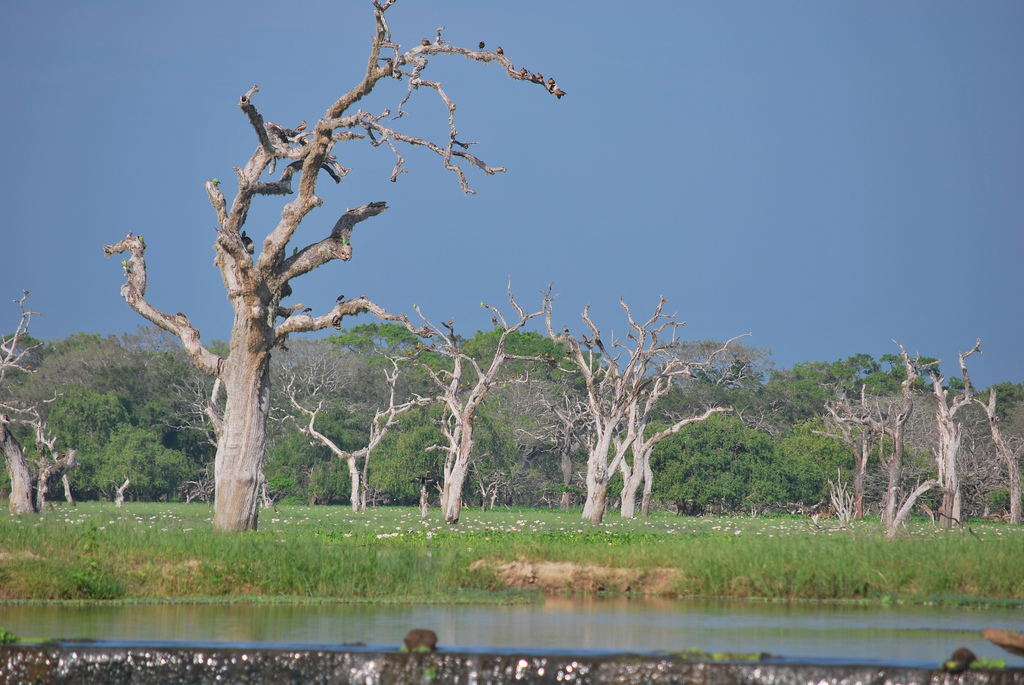
Fauna Diversity
Birds
Yala is one of the 70 Important Bird Areas (IBAs) in Sri Lanka.[10] Of 215 bird species of the park, seven are endemic to Sri Lanka.[2] They are Sri Lanka grey hornbill, Sri Lanka junglefowl, Sri Lanka wood pigeon, crimson-fronted barbet, black-capped bulbul, blue-tailed bee-eater and brown-capped babbler. The number of waterbirds inhabiting wetlands of Yala is 90 and half of them are migrants.[3] Waterfowl (lesser whistling duck, garganey), cormorants (little cormorant, Indian cormorant), large waterbirds (grey heron, black-headed ibis, Eurasian spoonbill, Asian openbill, painted stork), medium-sized waders Tringa spp., and small waders Charadrius spp. are among the most common waterbirds. Black-necked stork and lesser adjutant are many of the rare birds that can be seen in the park. The migrant great white pelican and resident spot-billed pelican are also have been recorded. Other waterbirds attracted to the Yala lagoons include lesser flamingo, pelicans, and rare species such as purple heron, night herons, egrets, purple swamphen, and Oriental darter. Thousands of waterfowls migrate to the lagoons of Yala during the northeast monsoon. They are northern pintail, white-winged tern, Eurasian curlew, Eurasian whimbrel, godwits, and ruddy turnstone. The visiting species mingled with residing lesser whistling duck, yellow-wattled lapwing, red-wattled lapwing, and great stone-curlew. Rock pigeon, barred buttonquail, Indian peafowl, black stork, black-winged stilt, and greater flamingo are among the other bird species. Crested serpent eagle and white-bellied sea eagle are the raptors of the park. The forest birds are orange-breasted green pigeon, hornbills, Old World flycatchers, Indian paradise flycatcher, Asian barbets, and orioles.
Mammals
Including Sri Lankan elephant, 44 species of mammals are resident in Yala National Park, and it has one of the highest leopard densities in the world. 25 individual leopards are estimated to roam in Block I. The elephant herd of Yala contains 300–350 individuals. The Sri Lankan sloth bear, leopard, elephant, and wild water buffalo are all threatened mammals that Yala harbours. Although water buffaloes are indigenous to Sri Lanka, most populations contain genes of the domestic stock or have descended from feral populations. Toque macaque, golden palm civet, red slender loris, and fishing cat are among the other mammals that can be seen in Yala. The elephant population of the park varies seasonally.
Reptiles
The reptile fauna recorded from the park is 47 and six of them are endemic. Sri Lankan krait, Boulenger’s keelback, Sri Lankan flying snake, painted-lip lizard, Wiegmann’s agama, and Bahir’s fan-throated lizard are the endemic species. The coastal line of the park is visited by the all five globally endangered sea turtles (leatherback turtle, olive ridley, loggerhead sea turtle, hawksbill turtle, and green turtle) that visit Sri Lanka. The two breeding crocodile species of Sri Lanka, mugger crocodile and saltwater crocodile, inhabit the park. The Indian cobra and Russell’s viper are among the other reptiles.
Amphibians
There are 18 amphibian species that have been recorded from Yala, while Bufo atukoralei and Adenomus kelaartii are endemic to Sri Lanka.


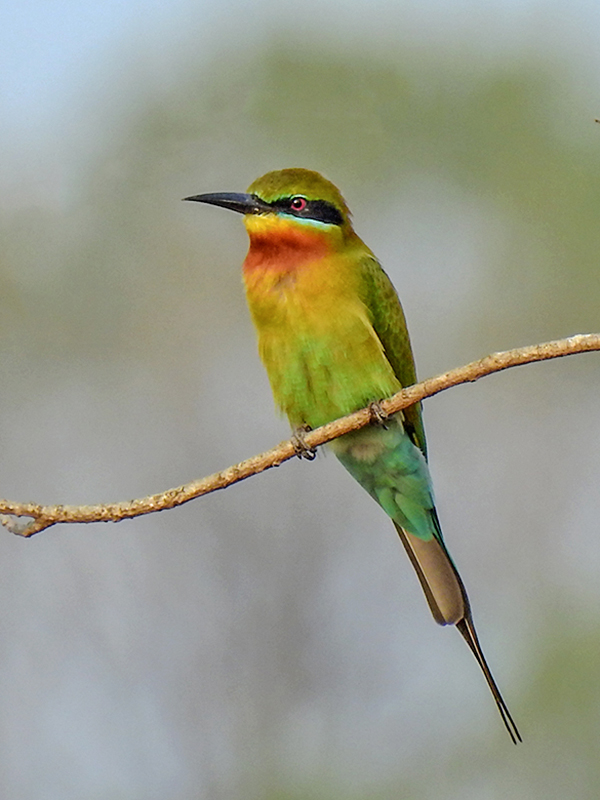
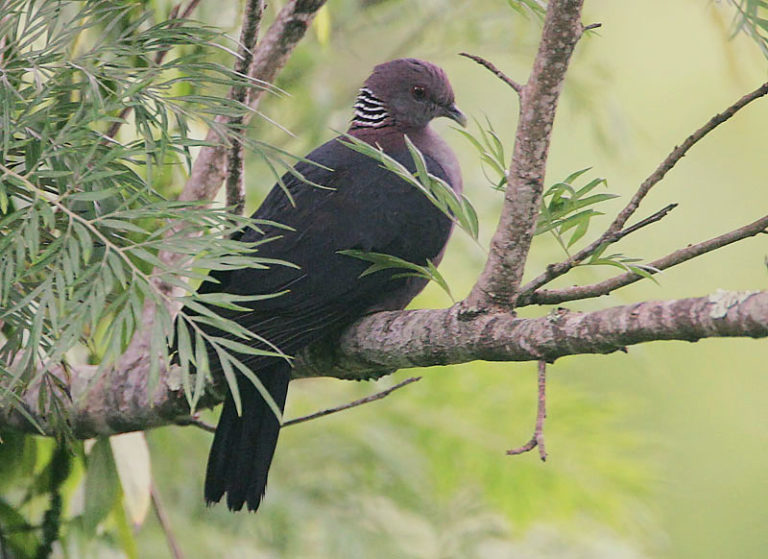
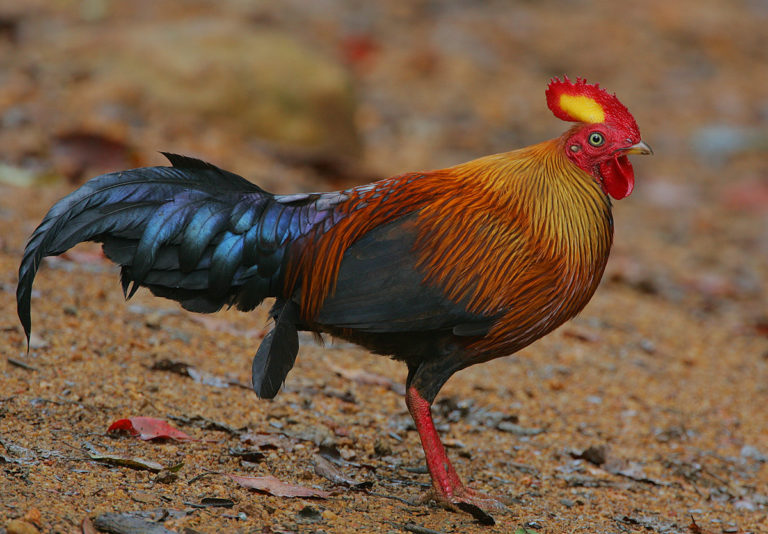
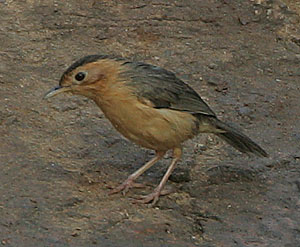




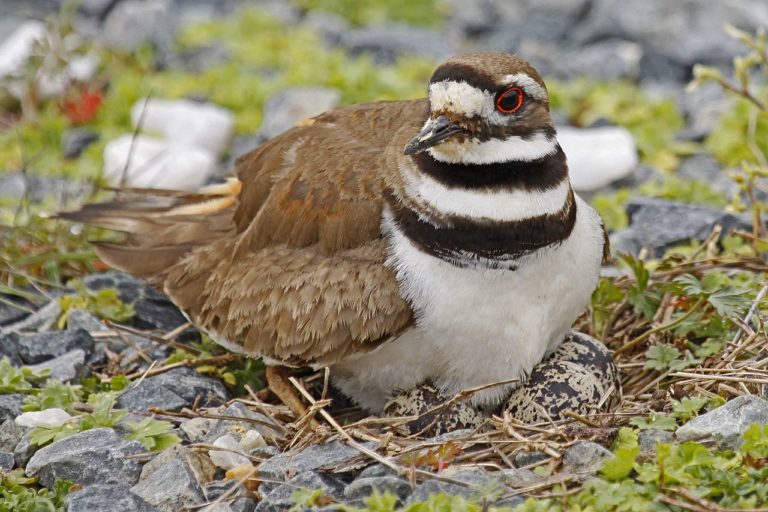


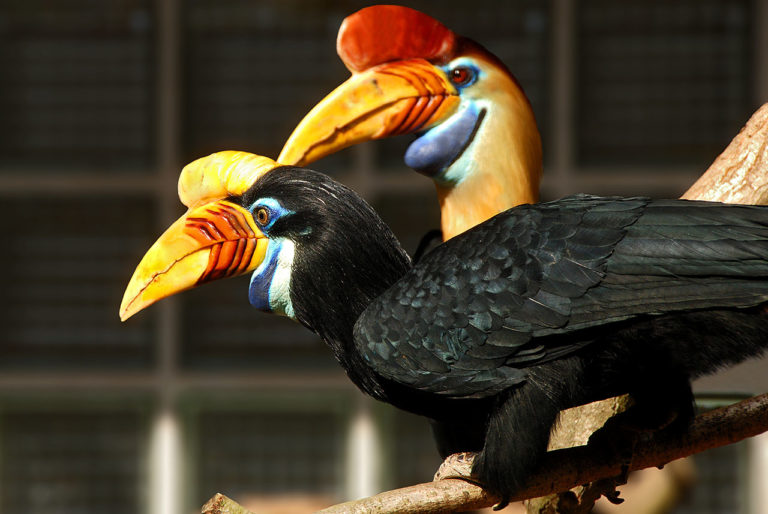

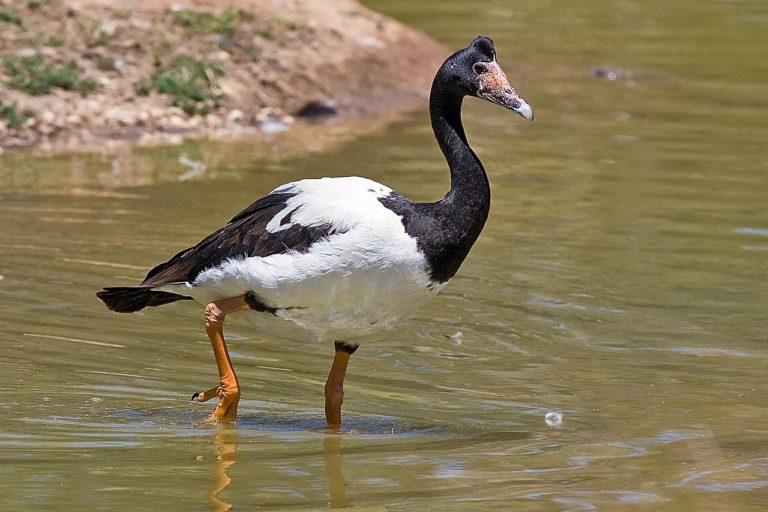
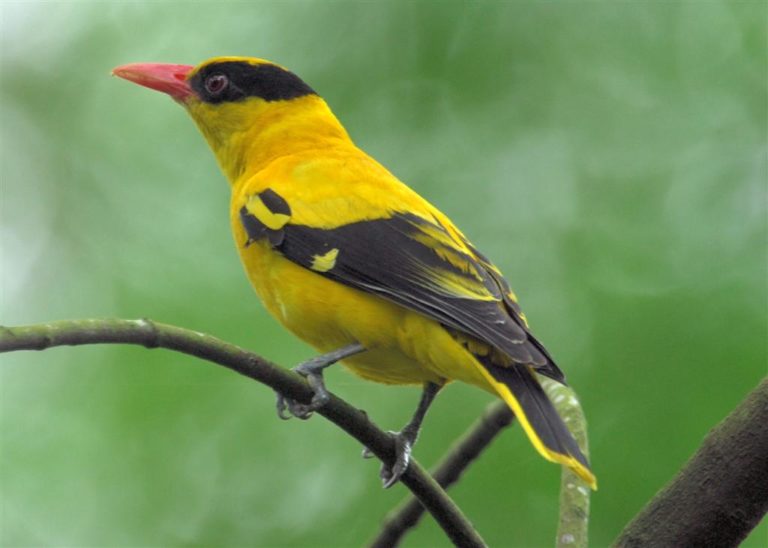
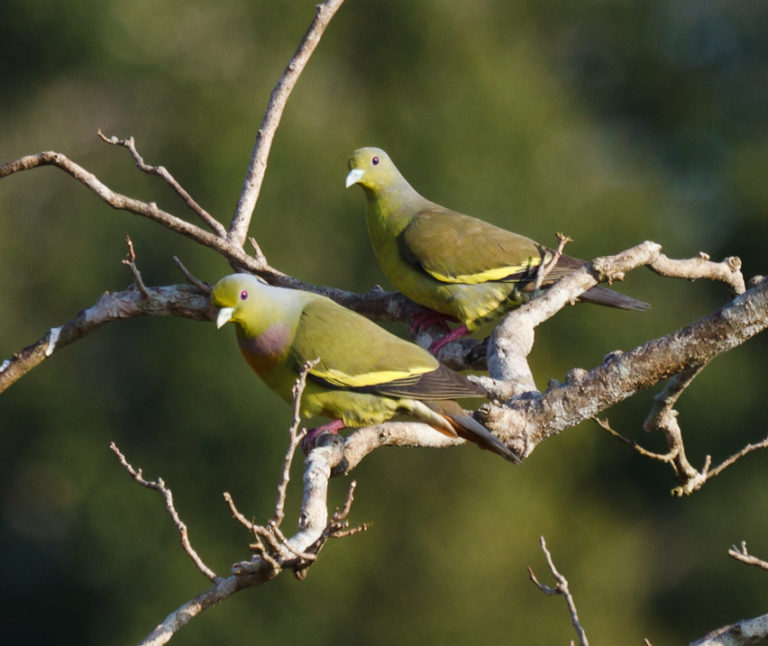

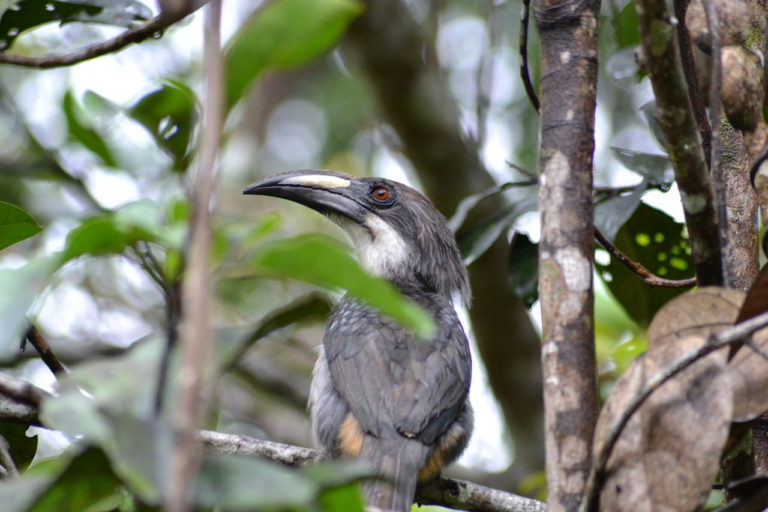

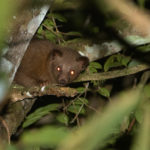
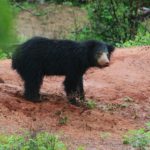
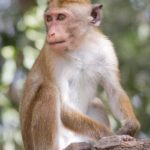
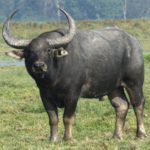
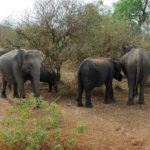





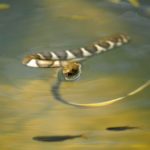
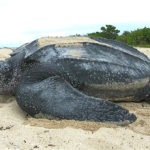
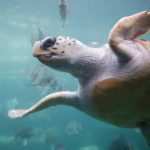
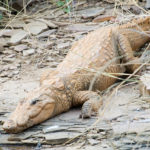
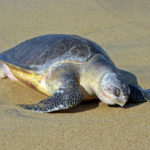



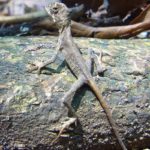




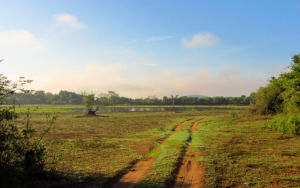
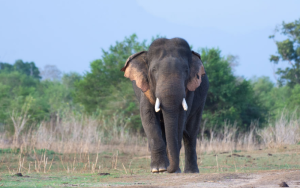
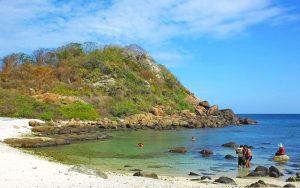
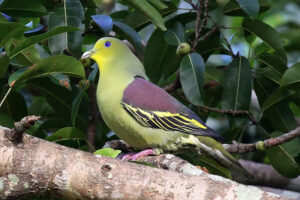
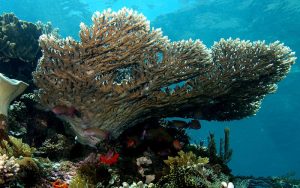

162 thoughts on “Yala National Park | Sri Lanka”
After exploring a handful of the articles on your website, I truly like
your technique of blogging. I book-marked it
to my bookmark site list and will be checking back in the near future.
Please visit my web site as well and let me know what you think.
Oh my goodness! Incredible article dude! Thank you so much, However I am having difficulties with your
RSS. I don’t understand the reason why I can’t subscribe
to it. Is there anybody getting identical RSS problems?
Anyone who knows the solution can you kindly respond? Thanx!!
Hurrah! Finally I got a website from where I be capable of actually
take useful information regarding my study and knowledge.
I totally agree the standpoint of upstairs. I often surfing on this forum when I m free and I find there are so much good information we can learn in this forum!
Definitely imagine that that you said. Your favourite reason appeared
to be on the net the easiest thing to keep in mind of.
I say to you, I certainly get irked whilst folks think about concerns that
they plainly do not recognise about. You controlled to hit the nail
upon the highest and defined out the whole thing with no need side effect , people could take a signal.
Will probably be again to get more. Thanks
I really love your blog.. Very nice colors & theme.
Did you make this website yourself? Please reply back as I’m planning to create my
own blog and would like to find out where you got this from or just what the theme is called.
Thank you!
The whole thing is done by me. This is a DIVI theme that I changed as I wanted.
You can certainly see your skills in the work you write.
The world hopes for even more passionate writers like you who are not afraid to mention how
they believe. At all times follow your heart.
I used to be able to find good information from your content.
Hmm it looks like your website ate my first comment (it was extremely long) so I
guess I’ll just sum it up what I wrote and say, I’m thoroughly enjoying
your blog. I too am an aspiring blog writer but I’m still new
to everything. Do you have any recommendations for novice
blog writers? I’d definitely appreciate it.
Unquestionably believe that which you stated. Your favorite justification seemed to be on the
internet the simplest thing to be aware of. I say to you, I definitely get irked while people consider worries that they plainly
don’t know about. You managed to hit the nail upon the
top and also defined out the whole thing without having side effect
, people can take a signal. Will probably be back to get more.
Thanks
Definitely consider that that you said. Your favorite
reason seemed to be at the net the easiest thing to understand of.
I say to you, I certainly get annoyed at the same time
as other people consider worries that they just do not
realize about. You managed to hit the nail upon the top and outlined out
the entire thing with no need side-effects , other folks can take a signal.
Will likely be again to get more. Thanks
Whoa! This blog looks exactly like my old one! It’s on a
totally different subject but it has pretty much the same layout and design. Superb choice of colors!
Hello there, I found your website by way of Google at the same time as searching
for a comparable matter, your site got here up, it appears great.
I’ve bookmarked it in my google bookmarks.
Hello there, just turned into aware of your weblog through
Google, and found that it is truly informative.
I’m going to watch out for brussels. I’ll appreciate if you happen to proceed this
in future. A lot of other people might be benefited from your writing.
Cheers!
Sure thing…once we covered Sri Lanka, we’ll cover all the regions.
Thanks for your encouraging word and also I was not sure whether the article might pitch the respective categories globally. I’ll continue with the same structure.
It is best to take part in a contest for among the best blogs on the web. I will advocate this website!
great put up, very informative. I wonder why the other experts of this sector
don’t realize this. You must proceed your writing. I’m confident, you’ve a
great readers’ base already!
hi!,I love your writing very a lot! share we keep up a correspondence
extra about your post on AOL? I require an expert on this area to unravel my problem.
May be that’s you! Looking forward to peer you.
Thanks for the thoughts you share through this website.
Youre so right. Im there with you. Your weblog is surely worth a read if anyone comes throughout it. Im lucky I did because now Ive got a whole new view of this. I didnt realise that this issue was so important and so universal. You definitely put it in perspective for me.
I think the admin of this web page is in fact working hard for his web page, for the reason that here every material is quality based data.|
Hi just thought i would tell you naklejki something.. This is twice now ive landed on your blog in the naklejki last 3 weeks searching for completely unrelated things. Spooky or what?
If it made you feel bad, so sorry.
I just changed the theme
Can you message me with some pointers on how you made this website look this good , I would appreciate it.
You can contact me via [email protected] for any technical support. This is a WordPress site designed with a Divi theme.
https://www.pinterest.com/ceylonwildtours/
This is Pinterest Board for Ceylon Wild Tours.
Hi 🙂 that they will get bored and forget about you. for this reason, try to make a list of topics that you wish to share, things that bloggers love to read about, techniques that attract more readers and things to avoid. this Have you considered promoting your blog? add it to SEO Directory right now 🙂
Hi,
Thanks for your advice. Well noted. Give me some time to implement after a little bit of study.
Hey there! Really good posting! I happen to be a ordinary visitor to your site (somewhat more like addict :P) of this website sadly I had a problem. Im just not at all positive whether it is the right site to question, but youve got no spam comments. I get comments just like watch movies online on a regular basis. May you assist me? Thanks a bunch.
Hi,
I did not pay for security yet. I too get spam comments not this site but my other site [https://ethicallegend.com/]. If you are using WordPress, then follow the steps
On your WP- Admin Panel select “Setting> Discussion>Discussion Settings>Before a comment appears” tick the option you prefer.[Comment must be manually approved]
This is the only method I follow for all my WordPress sites. This is I know about this matter and If it may not help you, please refer an expert opinion on the matter.
Rgds,
It’s exhausting to seek out educated people on this matter, but you sound like you realize what you’re speaking about! Thanks
The article gave us a significant Brainstorm session of all the possibilities we could make use of on our blog.
I have never read such a successful article before. Really nice blog post. Thanks.
Just thought I would leave a comment to say how much I enjoyed this read. Quality blog!
If you wish for to obtain much from this piece of writing then you have to apply such techniques to your won web site.|
*I discovered your blog web site on google and check some of your early posts. Continue to keep up the extremely excellent operate. I just extra up your RSS feed to my MSN News Reader. Seeking forward to reading a lot more from you later on!
Great points altogether, personally Im gonna have to bookmark this and come back to it. Do you have any feedback on your most recent post though?
I did a search on the issue and found most guys will approve with your website.
This is a superb news intended for bloggers. It opens entry to a large spectrum of people who find themselves finding the place to approach their fears. With your current theme, I can gain a visibility My organization is having now. Thanks for this informative article, I learned a lot! Free Webmaster
Fantastic beat ! I would like to apprentice even as you amend your web site, how can i subscribe for a
blog website? The account helped me a appropriate deal.
I had been tiny bit familiar of this your broadcast offered brilliant transparent idea
I think that what you composed was actually very logical.
However, what about this? what if you typed a catchier post title?
I am not suggesting your content isn’t good., but what
if you added something to maybe grab a person’s attention?
I mean Yala National Park | Ceylon Wild Tours is a
little plain. You might look at Yahoo’s home page and watch how
they write article headlines to get viewers to open the links.
You might add a video or a picture or two to grab people interested about what you’ve written.
In my opinion, it would bring your website a little bit more interesting.
Thanks for the update and I really appreciate your opinion.
I got it. I just wanted to show what we have here in Sri Lanka to get down a few tourists within my capacity. That was my primary purpose.
Thanks again, mam.
Best Regards
Hi, i feel that i noticed you visited my website so i got here to go back the want?.I’m attempting to in finding things
to improve my website!I guess its good enough to make use of some of your ideas!!
5
My brother recommended I might like this website. He was totally right.
This post truly made my day. You cann’t imagine simply how much time I had spent for this information! Thanks!
4.5
5
Thankfulness to my father who told me regarding this webpage, this blog is genuinely awesome.
I was very pleased to find this site. This is an intelligent and well written article, you must have put a fair amount of research into writing this. Thank you
My dear readers,
Thanks for your wonderful comments. I really appreciate each one of them. All of them are encouraging me to write more. I’ll tell you the truth since I thought I must share this with you.
I’m a banker at a reputed bank in Sri Lanka. These days we are under pressure to complete critical system upgrades. It may drag another few months and I need to be there.
Once I’m free, surely I’ll educate you on this beautiful island. However, it may not be everything but I’ll write what I know and experience. That would be the difference you may have seen.
Have a wonderful year for all of you. Stay safe and keep in touch.
Best Rgds,
Thusitha
Thanks for share very nice info. Your weblog could be very goodI am impressed by the information you have got on this blog. It shows how nicely you perceive this subject. Bookmarked this web page, will come back for more. You, my good friend, ROCK! I discovered just the knowledge I already searched in all places and just couldn’t find. What a perfect site. Like this website your website is one in all my new favs.I like this info introduced and it has given me some form of desire to succeed for some cause, so thanks
Pricey Blog holder. My husband and i love this posting along with your current site overall! The genuine piece of content is generally especially undoubtedly published along with effortlessly acceptable. Your current WP layout is without a doubt remarkable on top of that! Is going to be awesome to know just where My partner and i can acquire the fact that. Be sure to support furthermore , firm abs fine work. Everyone involve a lot more a lot of these webmasters which includes yourself on the net and much less spammers. Excellent partner!
I really enjoyed your post. However, it is not properly displaying in my monitor. I recommend you make sure your webdesign is compatible with all browsers. Otherwise, Three thumbs up
Hi, I see all your articles, keep them coming. Interesting post. Just found an extra site with super Links
This definitely be the next preference. You are perfect, theme team. I Really enjoy the system, fonts along
I cherished up to youll obtain carried out proper here. The comic strip is tasteful, your authored material stylish. nonetheless, you command get got an impatience over that you want be turning in the following. ill definitely come more earlier again since precisely the same just about a lot continuously inside of case you shield this hike.
This is a splendid read man. Great Share. However I’m having issue with your RSS . Fail to subscribe. So anybody else having similar RSS problem? Anybody who can assist kindly reply. Thanks in advance